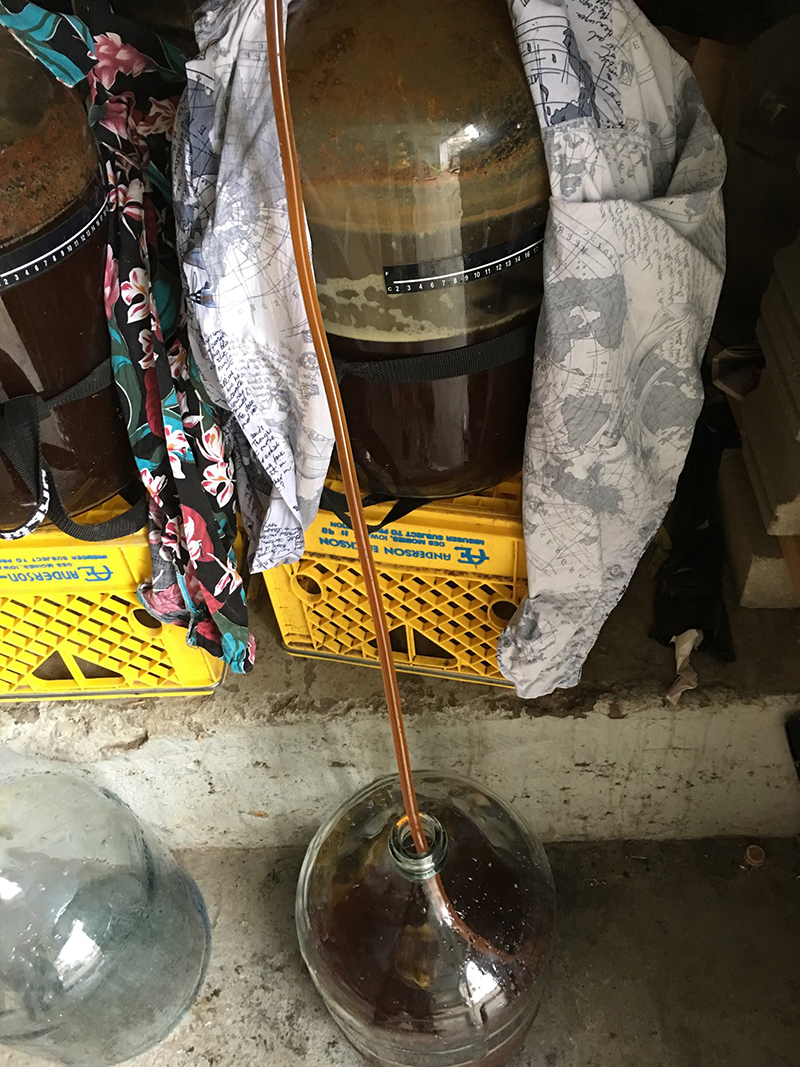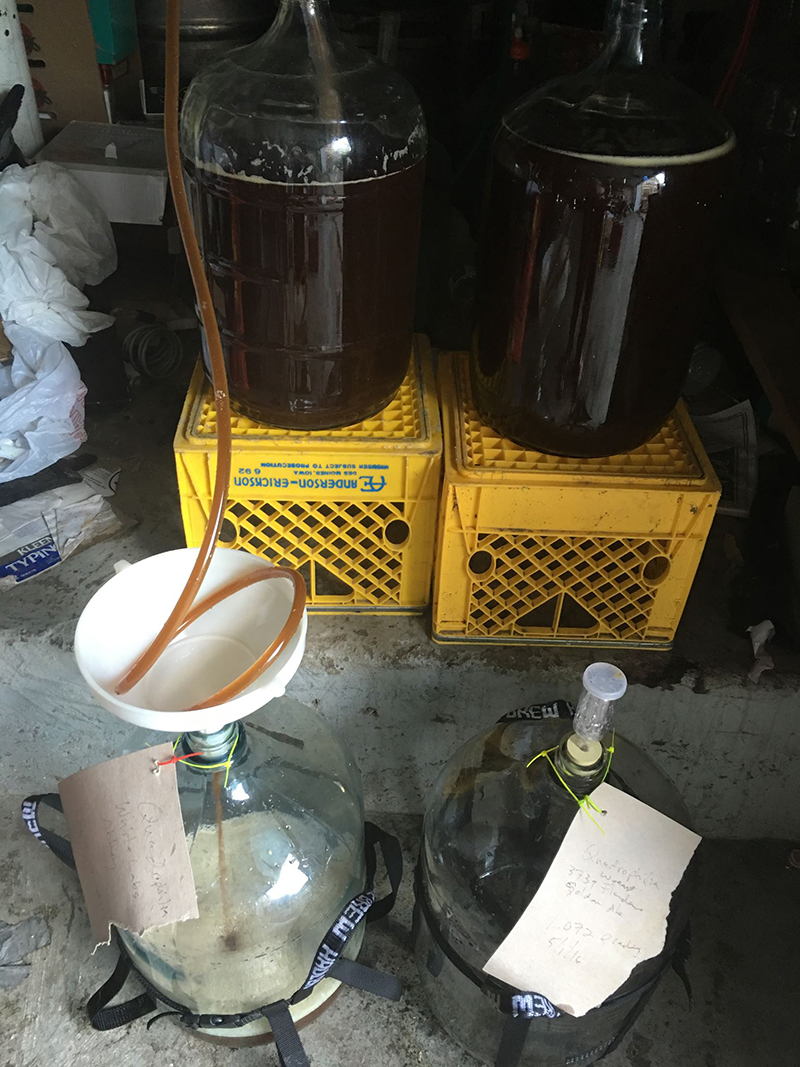Search Lobsterland
Tuesday, May 03, 2016
Quadrophilia: The Saga Continues
I'm an experienced homebrewer. Quadrophila, aka Your Friendly Neighborhood Sith Lord, a Belgian Quad I brewed a couple weeks back is cap code #117 for me. Batch #1 was spring of 1995. I've never lost a batch to infection, but I have made mistakes, and this was one of them.
The worst mistake I ever made was on, I think batch #7, I used a whole quart of blackstrap molasses because Charlie Papazian said a quarter cup in five gallons would give a light rum flavor/aroma. I like rum well enough, why not use eight times as much? Because it's a hard boiled egg fart mixed with a rusty railroad spike, that's why. That's the only batch I've ever dumped out, and I gave it a couple years in the bottle to mellow out first.
So Quadrophilia had an O.G. of 1.100. That's high. That's a freaking beast. And I've brewed enough beer to know you should make a starter when you're going there. Back in the day, nobody sold pitchable yeasts (enough cells to do the job, typically 100 billion), so we always made starters, and for a big beer like this we'd ramp up two or three times. Making a starter is like making a tiny batch of beer, so if you like brewing, why not make a starter, right? Well, because time. And because I've pitched gnarly O.G. with Activators before and got away with it.
This time, I was already racking when I read the specific gravity and learned that I hadn't gotten away with it this time. At that point, I so should have stopped transferring, run whatever back into the primary, rocked it to get the yeast back in suspension and maybe hit it with some DAP or yeast energizer. But no, after a few years of not brewing much I didn't think this through and I went ahead and transferred a beer that was still 1.072 on the Wyeast Flanders Golden Ale carboy and 1.062 on the White Labs Abbey carboy. If I'd really wanted to avoid making a starter I probably should have doubled down on yeast, 2 billion cells from a pair of Activator packs would probably have done the job. But once I'd racked off the lees, I had a whole other situation on my hands.
A tiny handful of highly stressed yeast trying to make it through what would be a fairly big O.G. to begin with. But there's alcohol present because they've fermented 30 to 40 points off the start, so you can't just throw new yeast in, they'll just get drunk and do a Hank Williams Sr. impersonation.
So I bought a new Activator of Wyeast's Abbey II, the Flanders Golden Ale was sold out and it was the closest thing available. And I made a starter, a quart of water to 2 cups of DME and let it chew on that for 24 hours, then racked roughly, aerating a bit, eyeballed a teaspoon of yeast energizer (DAP and other good stuff for the yeast). The hydrometer samples affirmed the wisdom of this repitching, the specific gravity had dropped maybe two points in two days. By making the starter I'd helped build up the yeast population plus got them acclimated to alcohol so they could impersonate Don Draper instead of Hank Sr. and do their job despite the boozy atmosphere.
And it occurred to me that the whole 'quad' thing (which I admit is a ridiculous beer—the best kind IMHO), this is going to have a quadruple fermentation: it had it's primary, secondary, now tertiary, then once it's fermented mostly to dryness I'll rack it to clear in what, a quadratic fermentation?
And then? Then I keg this bitch up and drink hearty of a beer that has easily been four times the work and four times the fun of most.
Labels:
Carpe Brewski
Subscribe to:
Post Comments (Atom)




No comments:
Post a Comment